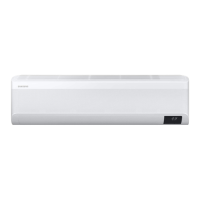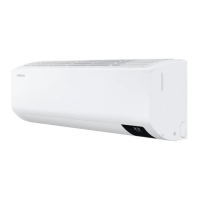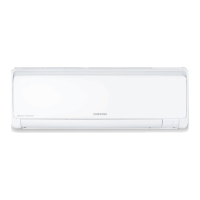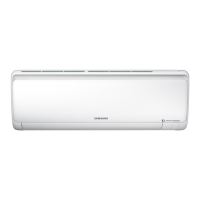6
Safety Information
English
Safety Information
• Make sure that the labels are affixed on the system to
notify it contains flammable refrigerant.
Recovery
• When removing refrigerant from the system for
servicing or decommissioning, it is recommended to
remove the entire refrigerant.
• When transferring refrigerant into cylinders, make sure
that only the refrigerant recovery cylinders are used.
• All cylinders used for the recovered refrigerant shall
be labelled.
• Cylinders shall be equipped with pressure relief valves
and shut-off valves in a proper order.
• Empty recovery cylinders shall be evacuated and
cooled before recovery.
• The recovery system shall operate normally according
to the specified instructions and shall be suitable for
refrigerant recovery.
• In addition, the calibration scales shall operate
normally.
• Hoses shall be equipped with leak-free disconnect
couplings.
• Before starting the recovery, check for the status of the
recovery system and sealing state. Consult with the
manufacturer if suspected.
• The recovered refrigerant shall be returned to the
supplier in the correct recovery cylinders with the
Waste Transfer Note attached.
• Do not mix refrigerants in the recovery units or
cylinders.
• If compressors or compressor oils are to be removed,
make sure that they have been evacuated to the
acceptable level to ensure that flammable refrigerant
does not remain in the lubricant.
• The evacuation process shall be performed before
sending the compressor to the suppliers.
• Only the electrical heating to the compressor body is
allowed to accelerate the process.
• Oil shall be drained safely from the system.
• For installation with handling the refrigerant (R-32),
use dedicated tools and piping materials. Because the
pressure of the refrigerant, R-32 is approximately 1.6 times
higher than that of R-22, failure to use the dedicated
tools and piping materials may cause rupture or injury.
Furthermore, it may cause serious accidents such as water
leakage, electric shock, or fire.
• Never install a motor-driven equipment to prevent
ignition.
Power supply line, fuse, or circuit breaker
• Be sure not to perform power cable modification,
extension wiring, and multiple wire connection.
‐ It may cause electric shock or fire due to poor
connection, poor insulation, or current limit
override.
‐ When extension wiring is required due to power
line damage, refer to "Step 2-5 Optional: Extending
the power cable" in the installation manual.

